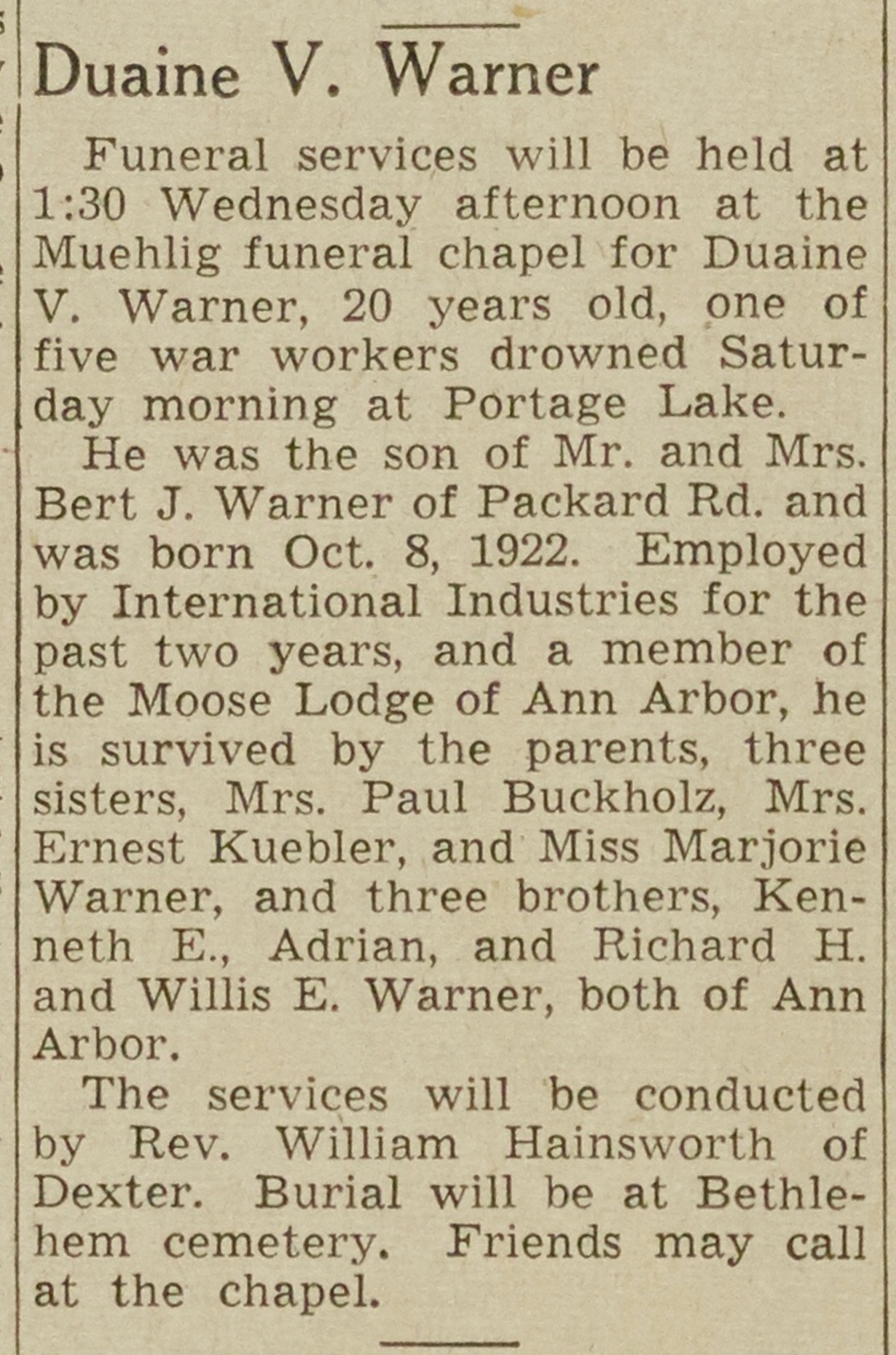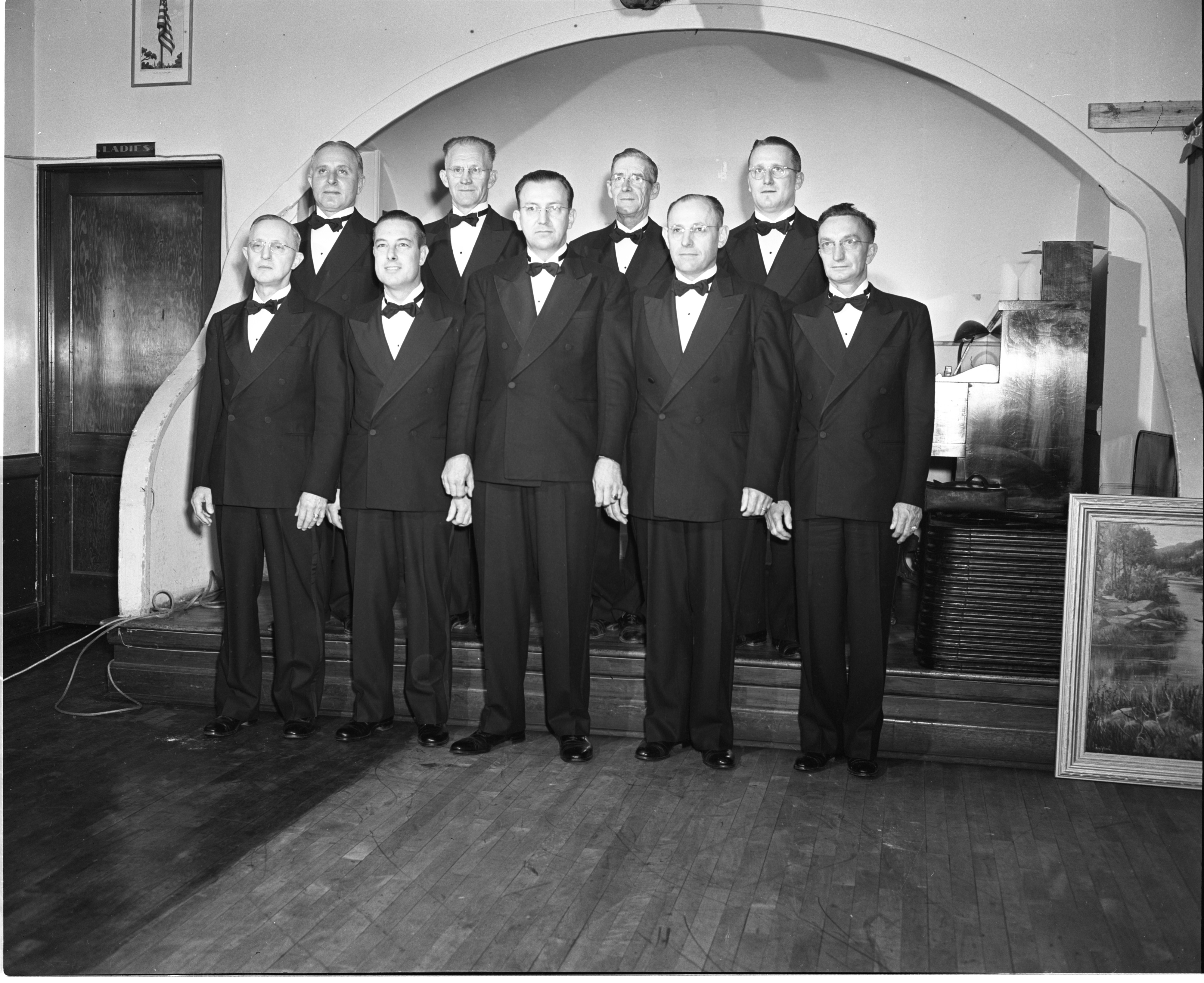
Ann Arbor’s Annie Oakley: Our City’s First Policewoman

Anna N. Schweizer was born August 25, 1902 in Springville, New York. She graduated from Springville High School and then attended Hurst Private School, a business college in Buffalo. On New Year’s Day of 1924, she married Milton H. Vanderpool. By the mid-1930s, her marriage was falling apart and she moved to Ann Arbor. Why she relocated to Michigan is unknown, but she found employment at the McDonald Ice Cream Company. In September 1940 her divorce from Milton was finalized and, two months later, she was hired by the Ann Arbor Police Department. She probably had no idea that the AAPD was where she would create a career for herself.
In November 1940, Chief Norman E. Cook announced the appointment of Miss Ann Vanderpool to the Ann Arbor Police Department. Her official start day was November 25, 1940, the Monday after Thanksgiving weekend. She assumed a full-time role as stenographer in the traffic and records bureau, and officially became the first female employee in the history of the AAPD.
Ann Vanderpool’s 1940 starting salary as an AAPD stenographer was $960 a year. Ann Arbor’s City Council voted for police department salary increases in May of 1941, and she received an $84 raise, bumping her up to $1,044 a year. By comparison, first year police officer salaries were raised to $1,560 a year.
In February 1942, members of the Ann Arbor Police Department gathered in City Hall for their annual chicken dinner banquet. Awards were given to officers for excellence in pistol marksmanship and, for the first time in the department’s history, a woman won an award. It was Ann Vanderpool, of course, who was awarded a medal in the marksman class. When honors were announced in the Ann Arbor News, she was referred to as “record clerk and police woman”. Although she did not serve as a police officer, she received much of the same training as incoming recruits. She had never fired a gun when she joined the force in 1940, but was proving herself to be more than capable. Everything changed that spring when Ann received a promotion. Male police officers were being called away to serve in World War II, making it the perfect opportunity to elevate a competent, female employee. City of Ann Arbor records show that Ann Vanderpool was officially sworn in as a police officer on April 27, 1942. The following day, the Ann Arbor News ran the article “Miss Vanderpool Will Head Traffic Bureau”. She had officially become Ann Arbor’s first policewoman.
June 1942 brought another major change into Ann’s life when she married Grover Tapp. Grover, who was also a native of the greater Buffalo area and divorced from his first spouse, worked as a steward for Ann Arbor’s Moose Lodge. They honeymooned in their home state of New York and moved into an apartment on Huron Street. In 2002, Sergeant Michael Logghe wrote “True Crimes and the History of the Ann Arbor Police Department”. He noted, “I have found many conflicting accounts of who was the first female police officer in the department…there is no doubt that either Ann Tapp or Ann Vanderpool was the first female police officer.” We now know that Ann Tapp and Ann Vanderpool were actually the same person.

In January 1943, the annual police banquet was held at the Allenel hotel. The following day’s Ann Arbor News ran the headline “Mrs. Tapp, Police Woman, Shows The Men How To Wield Revolver”. Her 73.83 per cent average for 1942 target practice took honors in the sharpshooter’s division, and she was presented with an award at the banquet.
February 1944 brought another turn in Ann’s life when her husband died. Grover Tapp was buried in Springville, New York’s Maplewood Cemetery near Ann’s parents, Frederick & Anna Schweizer. Despite this setback, she continued to excel in her role in the Ann Arbor Police Department, especially when it came to firing weapons. Her colleagues called her Annie Oakley, after the famous female sharpshooter. "Woman Officer Sets Pace For Pistol Shooters" ran in the Ann Arbor News in January 1945. By the end of 1946, Ann was earning $2,532 a year for her role as head of the traffic & records bureau. In January 1947 "Mrs. Tapp Shows Male Officers How To Shoot" was published in the Ann Arbor News. Describing how she was outscored only by the chief of police, the article lauded her target practice average of 76.15 and how she was awarded for expert classification. "Mrs. Ann Tapp, who would frown at being called a "Pistol-Packin' Mama, continues to show the way to most of Ann Arbor's pistol-packing policemen when it comes to firing a gun."

In the early 1950s, Ann moved to an apartment on Lawrence Street, on the corner of Division Street, which put her within walking distance of the police station. In 1957 Ann's brother-in-law, Clyde Harmon, died. After his death, Lura Schweizer Harmon, Ann's sister, moved in with Ann. The two sisters lived together on Lawrence Street until Lura's death in 1965.
Ann Tapp, Ann Arbor Police Department Group Photo, May 1953

On August 25, 1967 Ann celebrated her 65th birthday. One week later, after 27 years with the Ann Arbor Police Department, she retired. Police Chief Walter E. Krasny, who announced her departure, said Ann Tapp was "most loyal, greatly devoted to her work...a person who lived her job and took it home with her...". She had worked for five police chiefs: Norman E. Cook, Sherman Mortenson, Casper M. Enkemann, Rolland J. Gainsley, and Krasny. In her later years with the department, she had served as executive secretary to the chief.
Despite her longevity with the AAPD, her dedication, and her closet full of marksmanship trophies, Ann Tapp never served on equal footing with the men in the department. In 1971 that glass ceiling was finally broken when Tanya L. Padgett, Martha E. Parks, and Tommie A. Stewart became the first patrolwomen in the history of the Ann Arbor Police. Some local historians point to this group as Ann Arbor's first true policewomen, finally serving with the same rights and responsibilities of their male counterparts. Whatever your opinion is on the question of "first", it's clear that Ann Tapp should be recognized and celebrated along with Tanya, Martha, and Tommie. All of these women were trailblazers in a predominately male line of work.

In 1979, Ann moved to Florida to live with Dorothy Mae Schweizer. Dorothy was the widow of Richard Lord Schweizer, Ann's nephew. Ann remained in Florida for the rest of her life and died near Orlando on September 27, 1991. She was 89 years old. Her brief obituary in The Orlando Sentinel noted "She was a retired police officer". Ann Arbor's first policewoman, Ann Tapp, returned to New York and now rests in Springville’s Maplewood Cemetery, next to her husband Grover. We are thankful for her service.
Harry Bliss - Drummer For 50 Years, October 1953

Year:
1953
Ann Arbor News, October 14, 1953
Caption:
Taking what the profession refers to as a "hot riff" is Harry Bliss, Ann Arbor drummer who has been in the business for 50 years. Bliss says today's music is not much different than when he began drumming, though the equipment is better.
- Read more about Harry Bliss - Drummer For 50 Years, October 1953
- Log in or register to post comments
Drummer Marks Half-Century In Show Business, Continues His Thumping

Duaine V. Warner

- Read more about Duaine V. Warner
- Log in or register to post comments
Ann Arbor's Moose Lodge Drill Team, September 1946

Year:
1946
Ann Arbor News, September 24, 1946
Caption:
WIN NATIONAL MOOSE HONORS: Members of the drill team of Ann Arbor's Moose lodge, already proud of having won first place honors in the Moose state competition earlier this summer, have received further recognition with the announcement that the team has been selected second-place winner of national competition held in Chicago in August. Team members shown in the back row above are from left to right: George Hager, the team's coach: Floyd Routson, William Goings and John Fontana. In the front row are Frank Lange, Loren Bement, Gordon Packard, Louis Koebnick and Leo Wood.
- Read more about Ann Arbor's Moose Lodge Drill Team, September 1946
- Log in or register to post comments
Contractor William Eddy Dies At 77

- Read more about Contractor William Eddy Dies At 77
- Log in or register to post comments
Eddy, William F.

- Read more about Eddy, William F.
- Log in or register to post comments
Fields, Curtis Elton

- Read more about Fields, Curtis Elton
- Log in or register to post comments
Janice Dusseau

- Read more about Janice Dusseau
- Log in or register to post comments
Moose Sportsmen Trapshooting, September 1965 Photographer: Doug Fulton

Year:
1965
Ann Arbor News, September 11, 1965
Caption:
Trapshooters' 'Iron Mike' Pitching machines, universally tabbed "Iron Mikes," save wear and tear on players' arms during baseball batting practice. Trapshooters, too, have their "Iron Mikes" to toss out clay pigeons when target work is the order of the day. This is the one used by members of the Ann Arbor Moose Lodge's 200-man Sportsman's League.
- Read more about Moose Sportsmen Trapshooting, September 1965
- Log in or register to post comments

